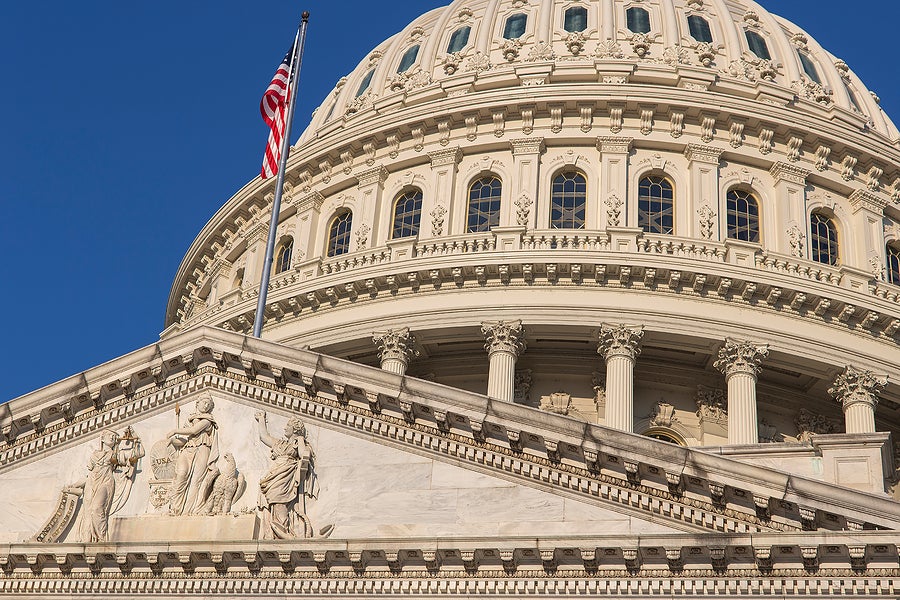In the House of Representatives, legislation passes with a simple majority of 218 of 435 votes recorded on an electronic voting system. The Senate system is, by comparison, stuck in the dark ages. In the Senate, the clerk calls the names of each Senator and records the votes on a tally sheet. Like the House, only a simple majority is required to pass legislation, but before a vote on final passage can even take place, a vote of three-fifths of the Senate (60 of 100) is required to invoke cloture and end debate. Without 60 votes to invoke cloture, any Senator can block or delay action on legislation by filibustering – debating at length, offering numerous procedural motions, or even reading bedtime stories. This means that, in practice, 60 votes are needed to move forward in the Senate.
There are some exceptions to the 60-vote threshold for “executive business,” namely executive and judicial branch nominations. In 2013, the cloture rules were reinterpreted to allow a simple majority vote to move forward on some nominations and, in 2017, the simple majority requirement was extended to Supreme Court nominations.
For the most part, “legislative business” is still subject to a 60-vote threshold to end debate and move forward to final passage, but there’s another key exception that we’ll be hearing a lot about in the coming weeks and months – budget reconciliation.
In both chambers, the budgetary process starts with a budget resolution crafted by the Budget Committees (led by John Yarmuth (D-KY) and Steve Womack (R-AR) in the House and led by Bernie Sanders (I-VT) and Mike Enzi (R-WY) in the Senate). The budget resolution establishes overall funding levels by various budget functions, and must be agreed to by both chambers, but it does not itself become law. (The detailed and binding funding work comes later, through the House and Senate Appropriations Committees.) The budget resolution is governed by special rules in the House and Senate that are designed to speed consideration, including limited debate time and no Senate filibuster. Though the budget resolution is technically non-binding, it can include budget reconciliation instructions directing certain committees to craft policies that achieve its goals.
In the case of health care legislation, the budget reconciliation instructions (if included) typically direct the relevant committees (Ways and Means, Energy and Commerce in the House; Finance, HELP in the Senate) to increase or decrease spending by specified amounts over a specified time frame. Once the committees have satisfied the reconciliation instructions, the reconciliation bills move to the floor.
In the House, reconciliation bills move forward in the same manner as other legislation. But reconciliation comes with major procedural advantages (and challenges) in the Senate. The main procedural advantage is that reconciliation bills are limited to 20 hours of debate and not subject to filibuster; therefore, reconciliation bills can move forward and pass with a simple majority vote. Another procedural advantage is that amendments to reconciliation bills must be germane – a strict standard requiring relevance to the pending bill.
Reconciliation bills however are not an open-ended, easy way to maneuver around the Senate’s filibuster rules. The Senate can consider three basic subjects of reconciliation – spending, revenues, and the federal debt limit – in a single bill or multiple bills, but it can consider each of these in only one bill per year (unless Congress passes a second budget resolution).
Additionally, reconciliation bills are subject to the Byrd Rule in the Senate (named after Senator Robert Byrd (D-WV) and first adopted in the 1980s). The idea behind the Byrd Rule is that because reconciliation bills are considered under expedited procedures, they should be limited in scope. But the application of the Byrd Rule is a lot more complicated. The Byrd Rule prohibits the inclusion of “extraneous” measures, defined as measures: with no budgetary effect; that worsen the deficit when a committee has not achieved its reconciliation target; outside the jurisdiction of the committee that submitted the title or provision; that produce a budgetary effect that is merely incidental to the non-budgetary policy change; that increase deficits for any fiscal year outside the reconciliation window; and that recommend changes to Social Security.
Senators believing there is an extraneous provision can raise a point of order against the provision, amendments, or the conference agreement, and the Senate Parliamentarian will decide whether there is a Byrd Rule violation. If the provision is found to violate the Byrd Rule, it is struck and cannot be offered later as an amendment. Byrd Rule points of order are unlikely to be cut and dry. Typically, the minority party will challenge various provisions as extraneous that the majority party believes comply with all of the reconciliation rules, and each party will present its arguments to the Parliamentarian. In Medicaid policy, perhaps the most hotly debated Byrd Rule requirement is that the budgetary effect is not merely incidental to the non-budgetary policy change.
In part 2 of this reconciliation refresher, I’ll take a closer look at previous reconciliation bills, including what types of Medicaid policies have passed the Byrd Rule test, to shed some light on what we can expect in the next few weeks and months as the 117th Congress gets to work.


